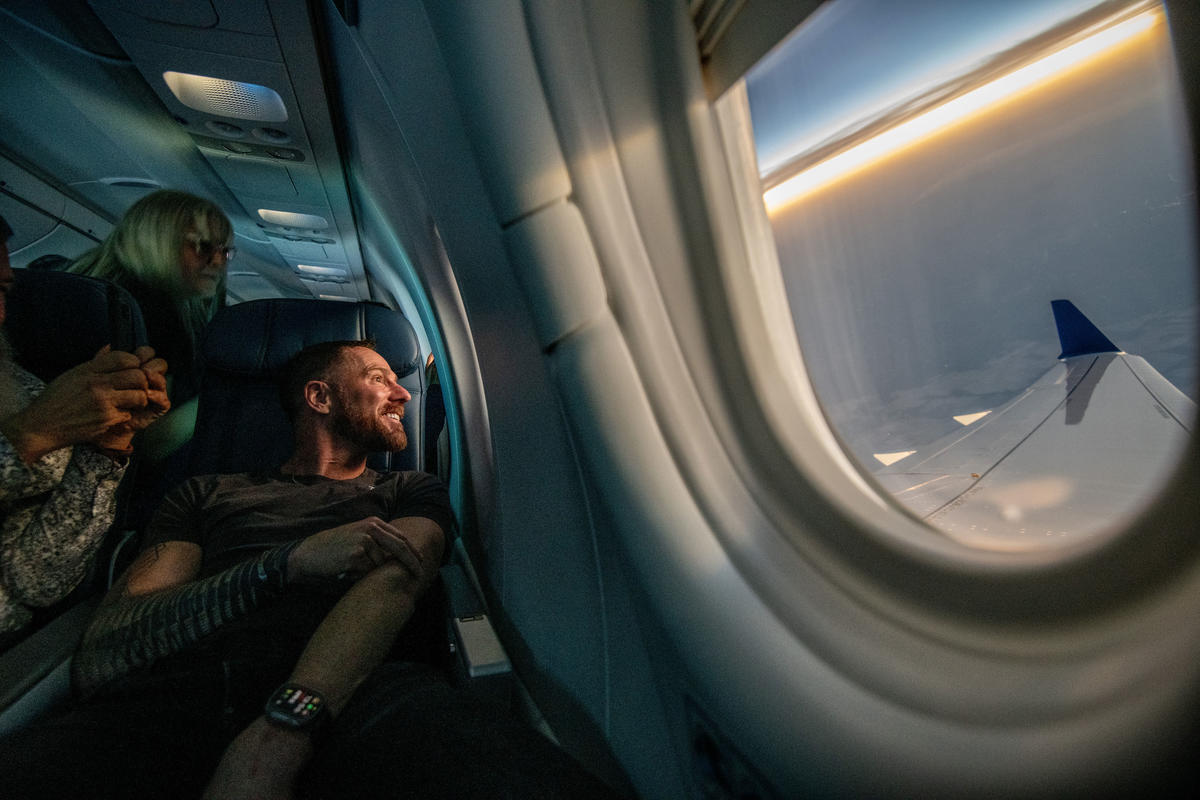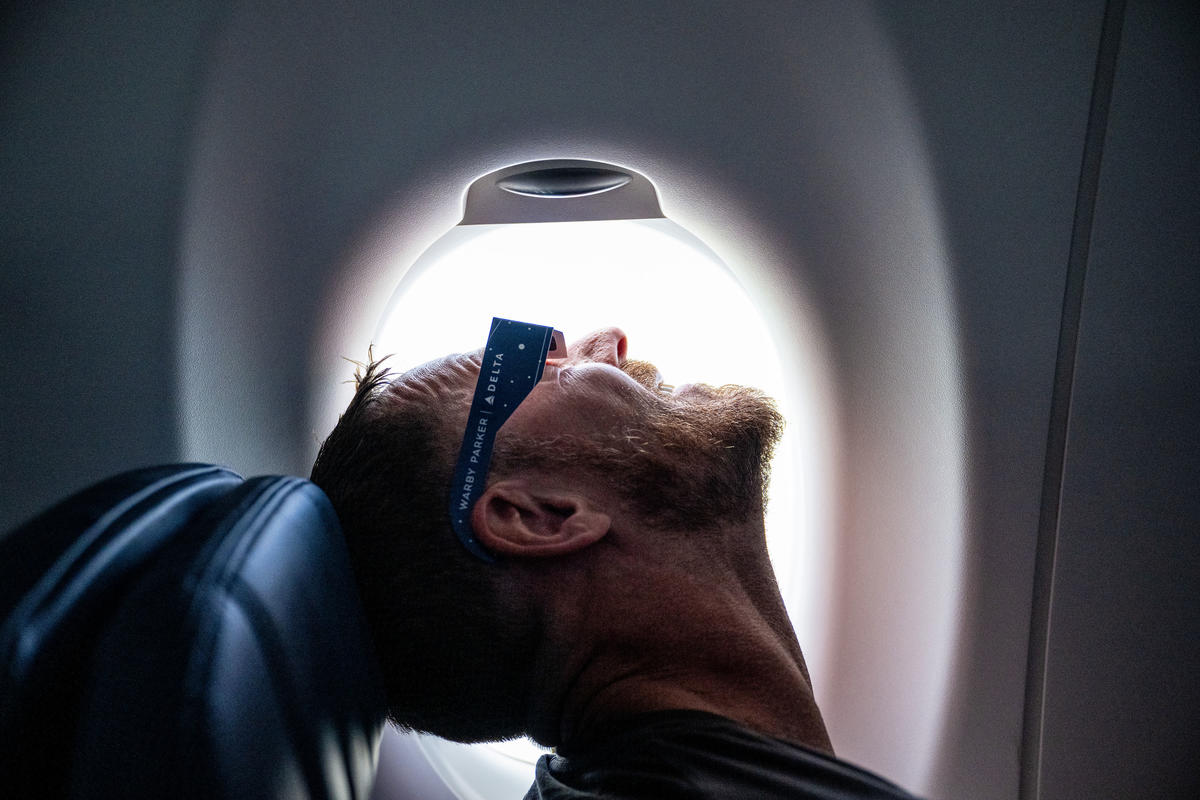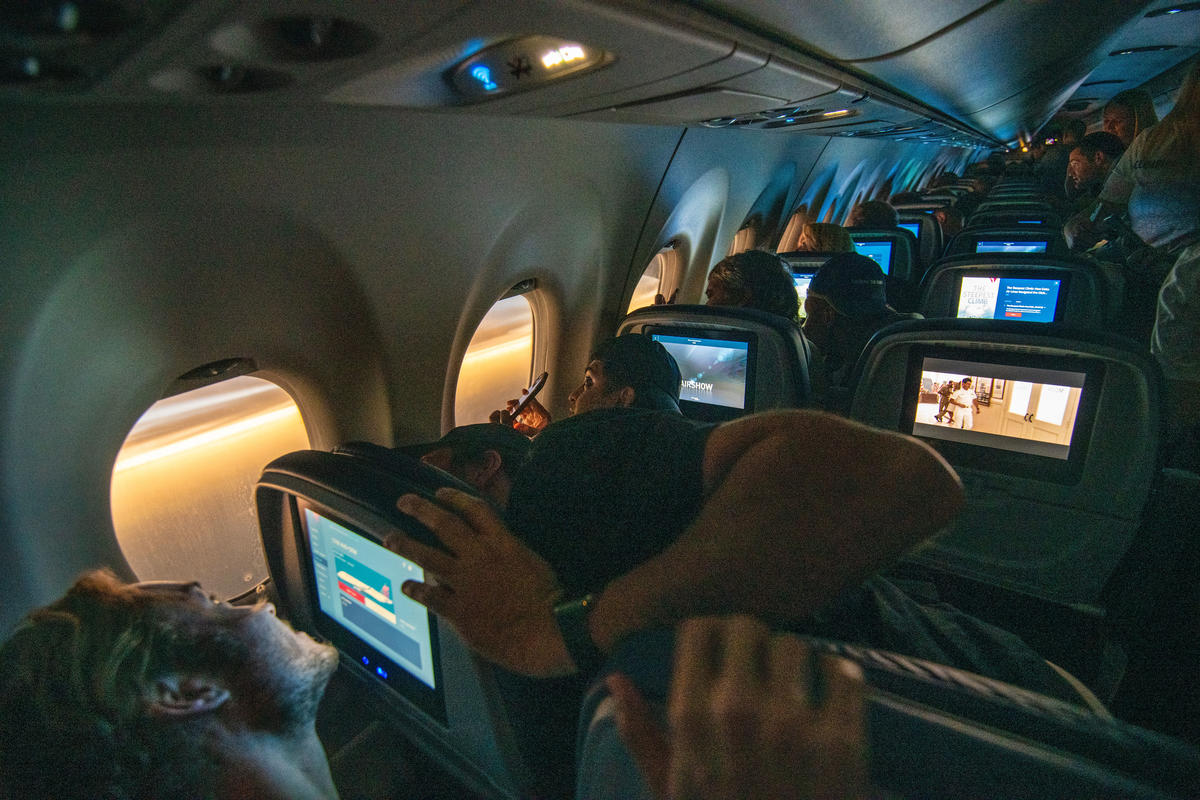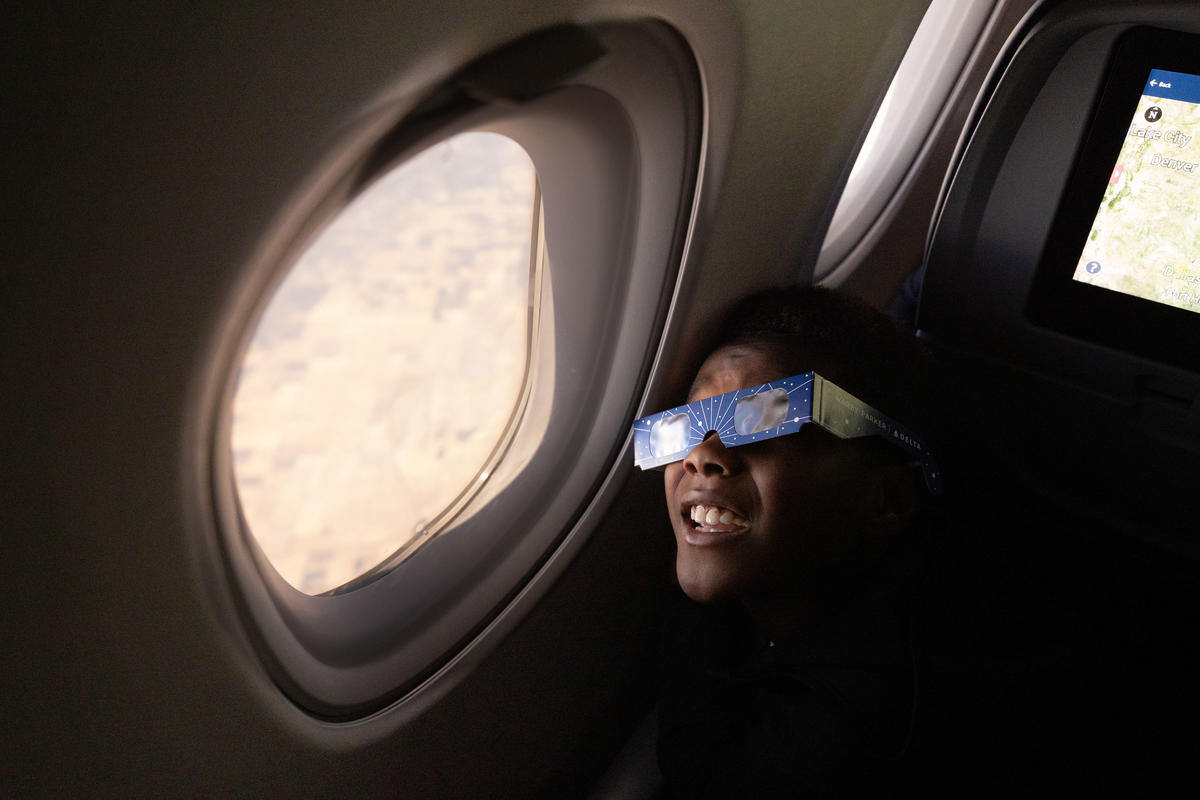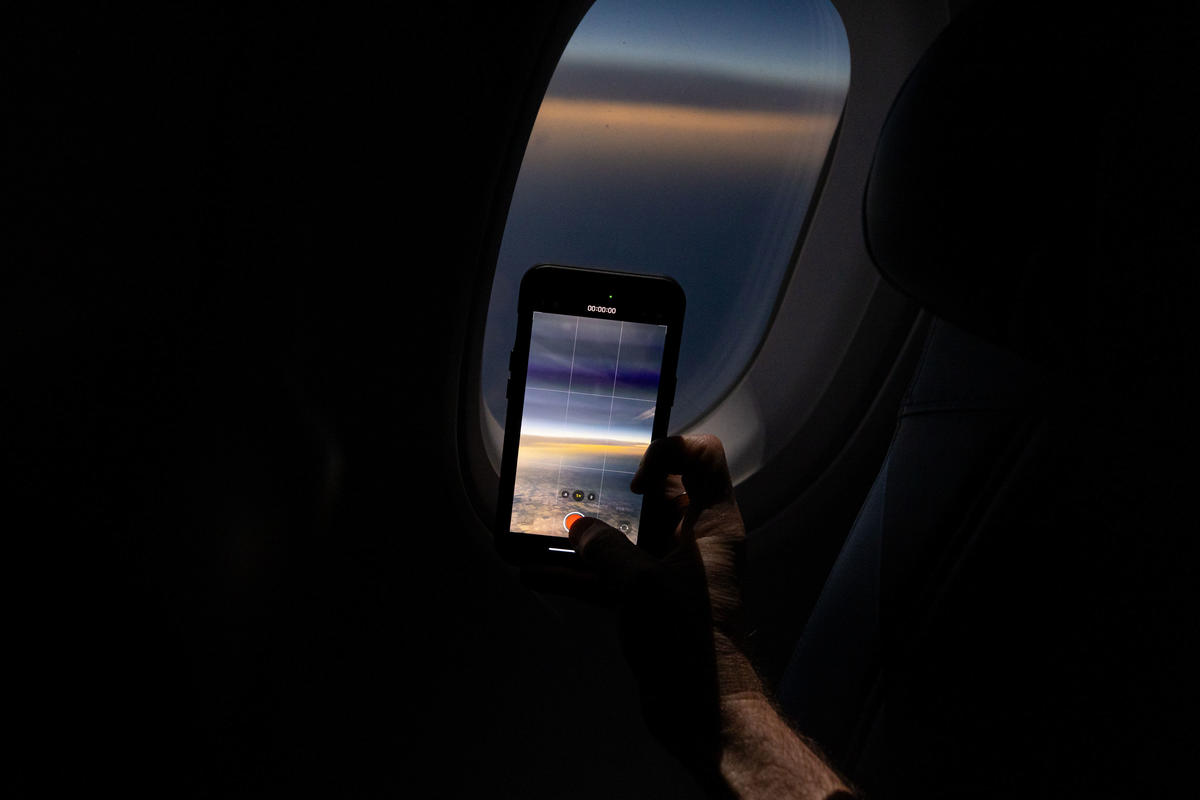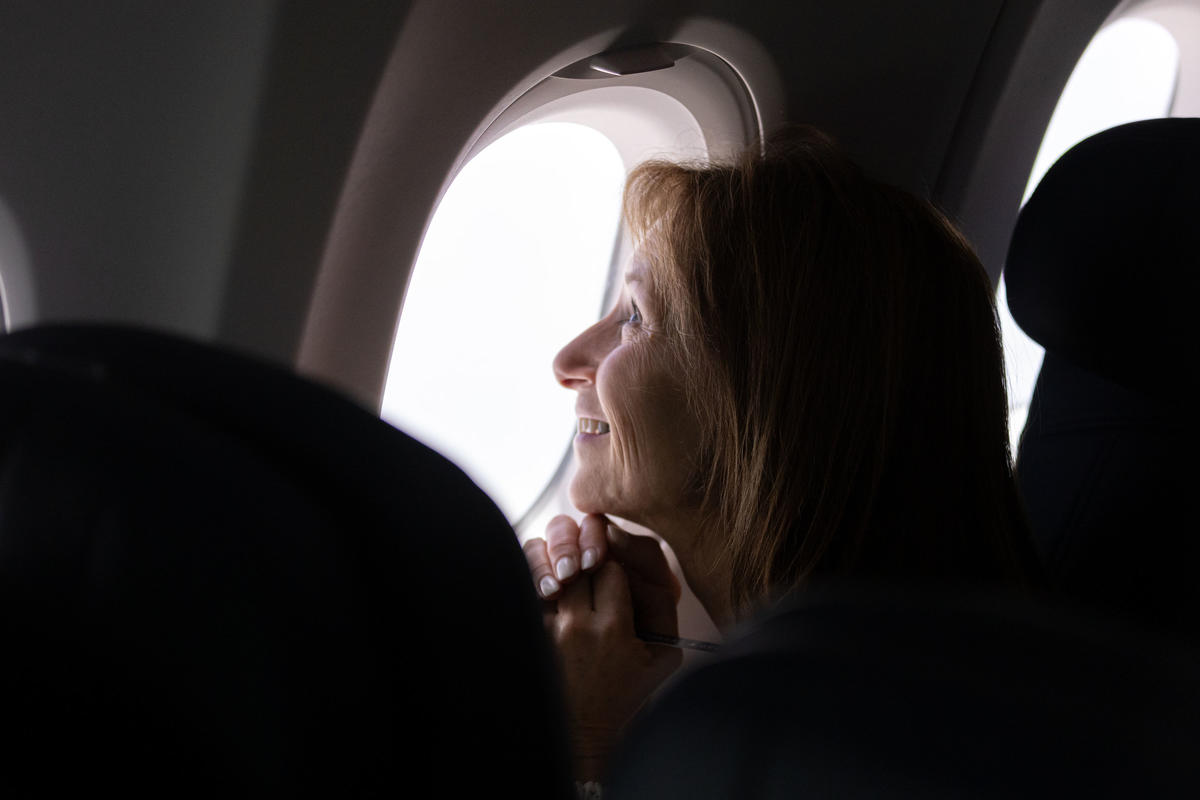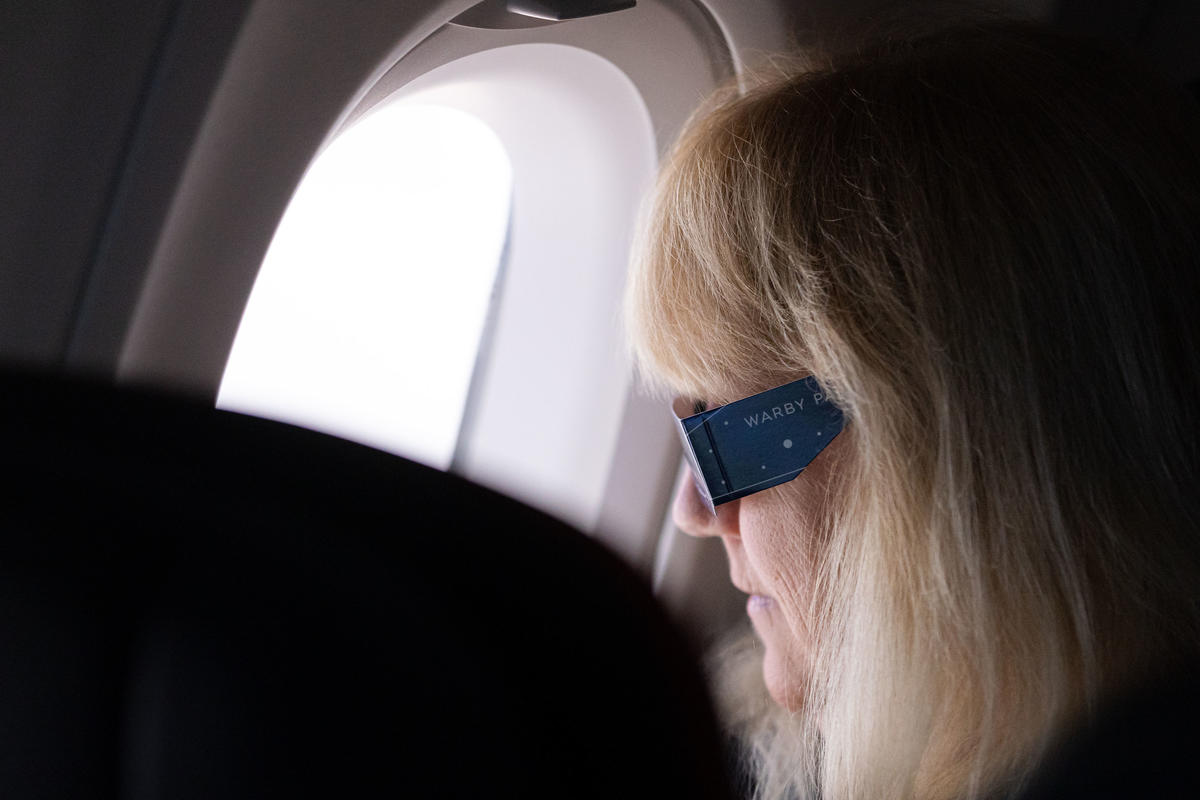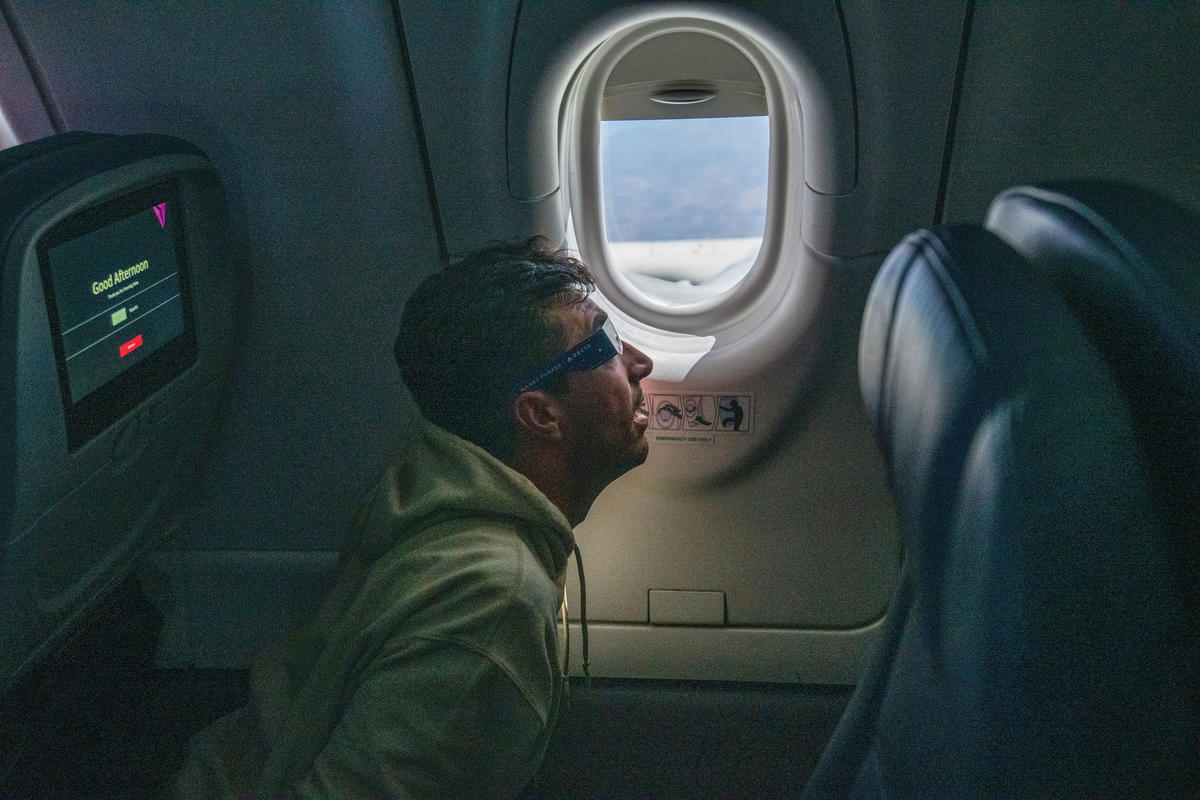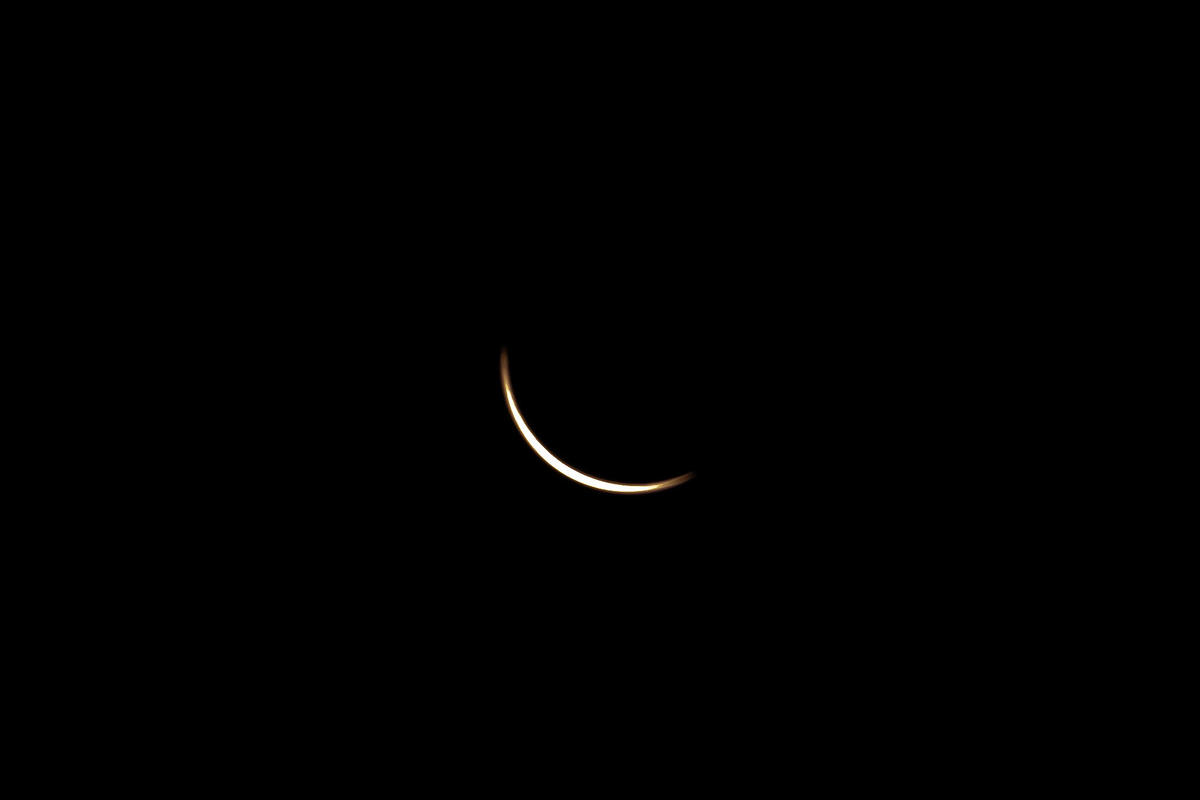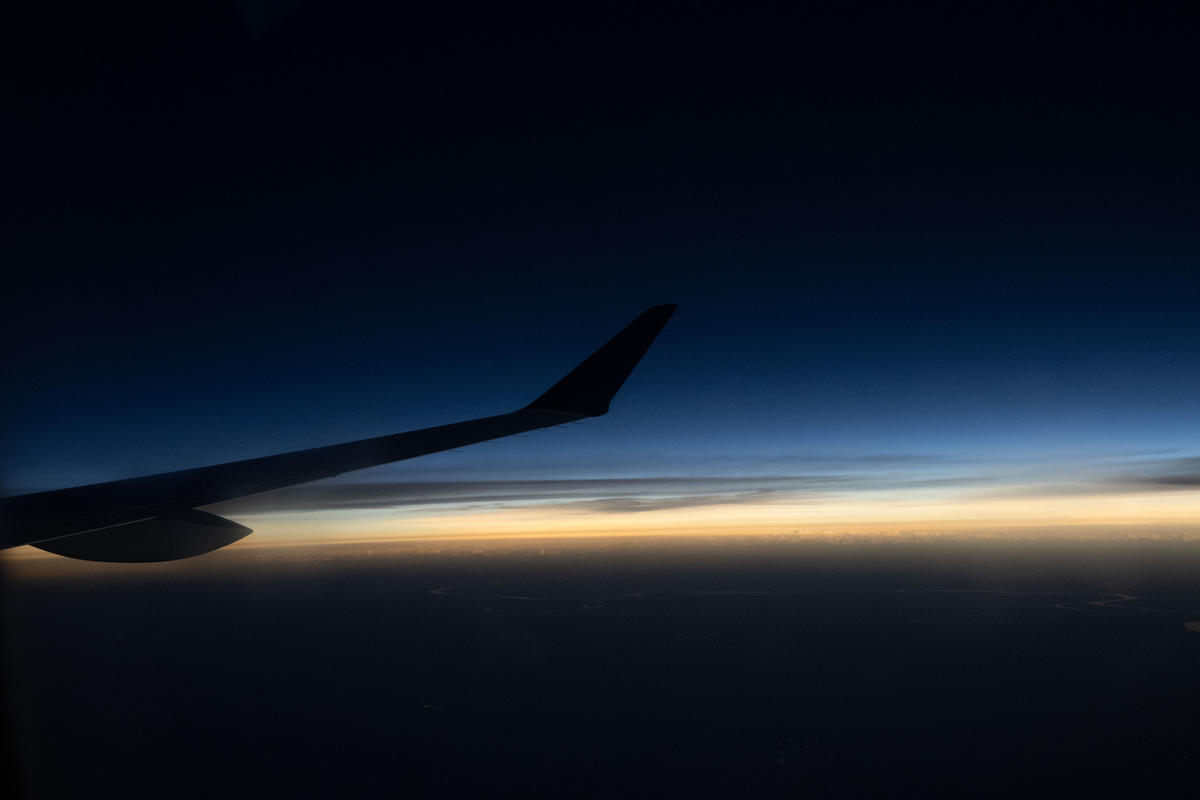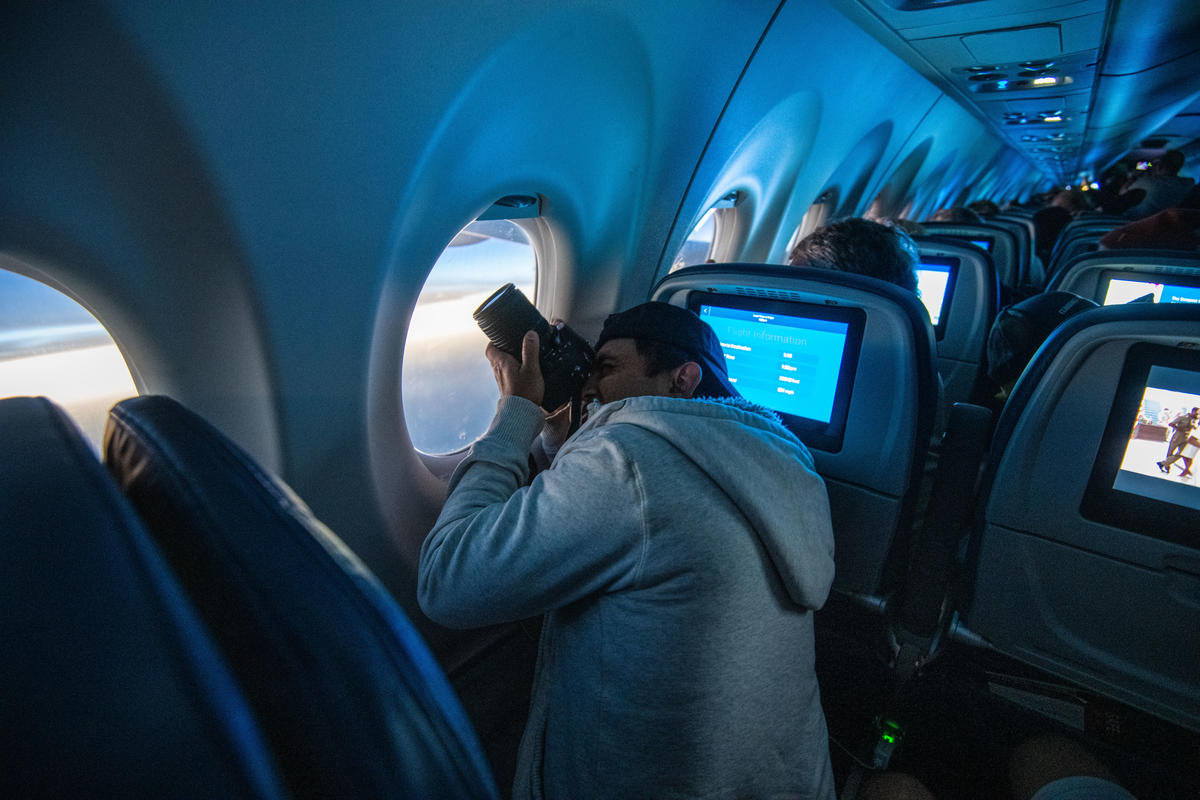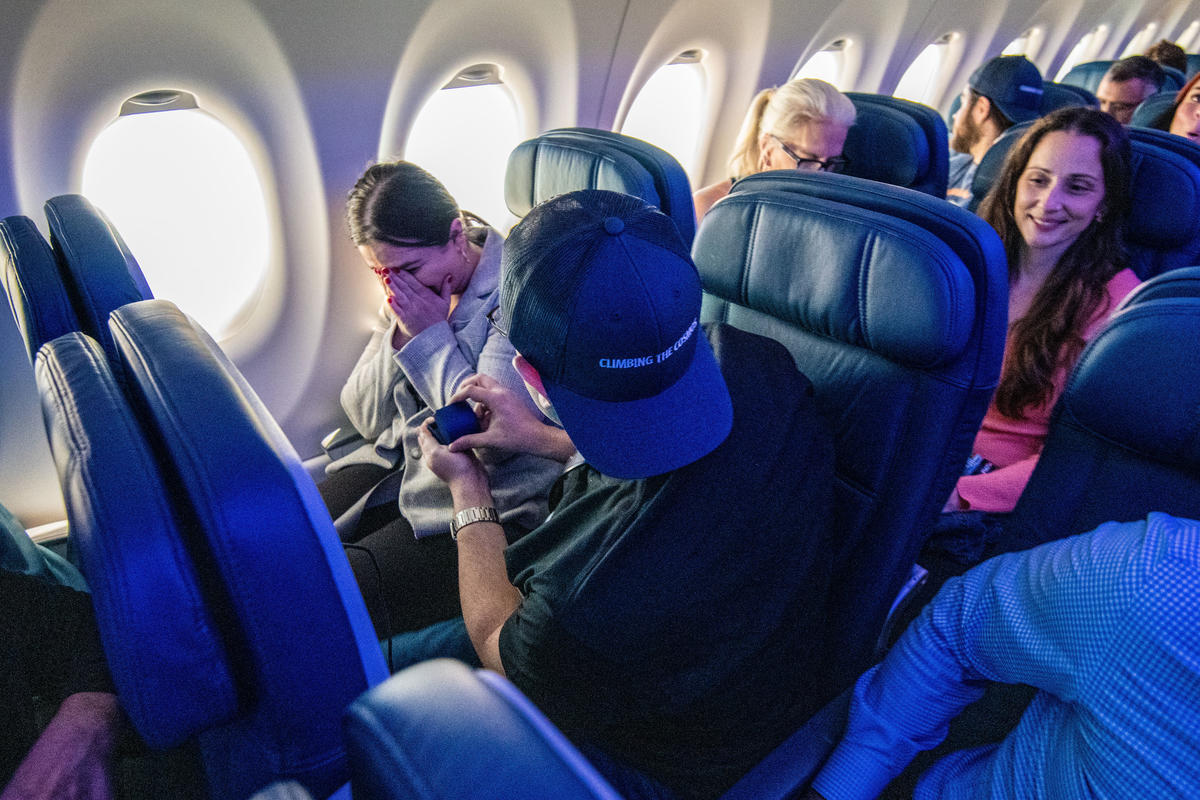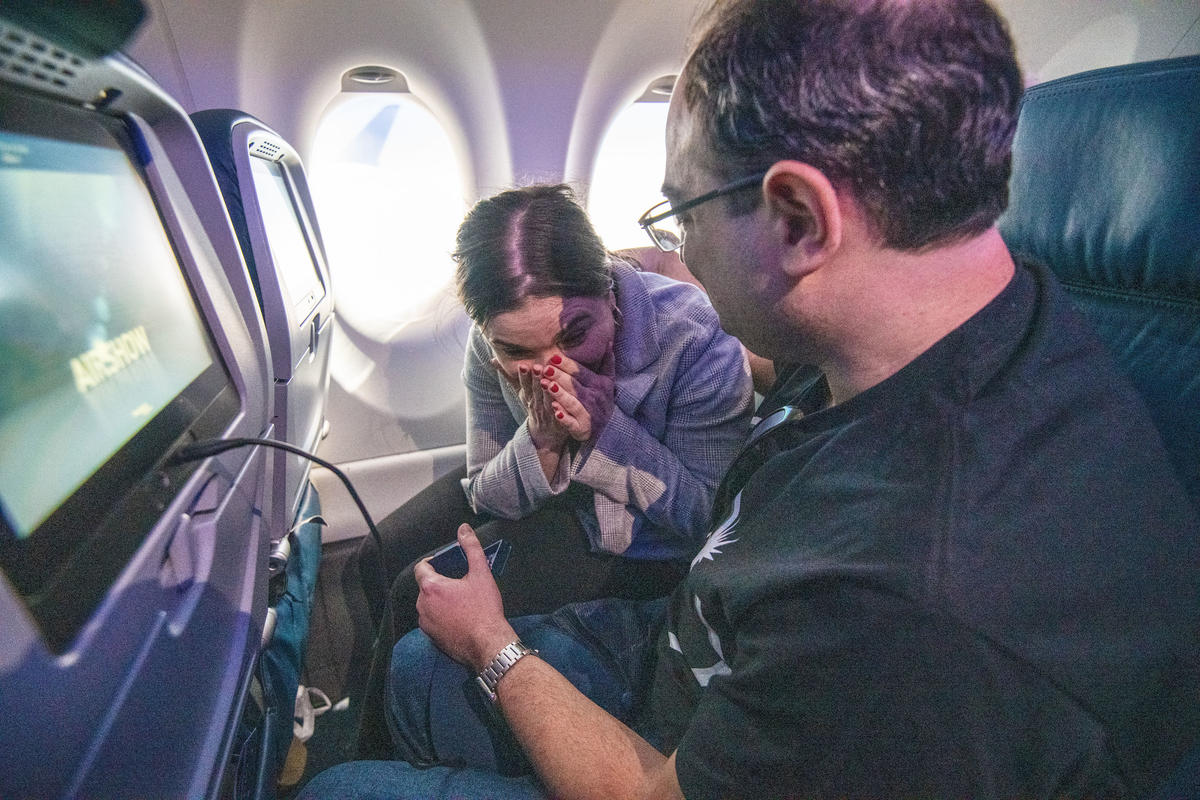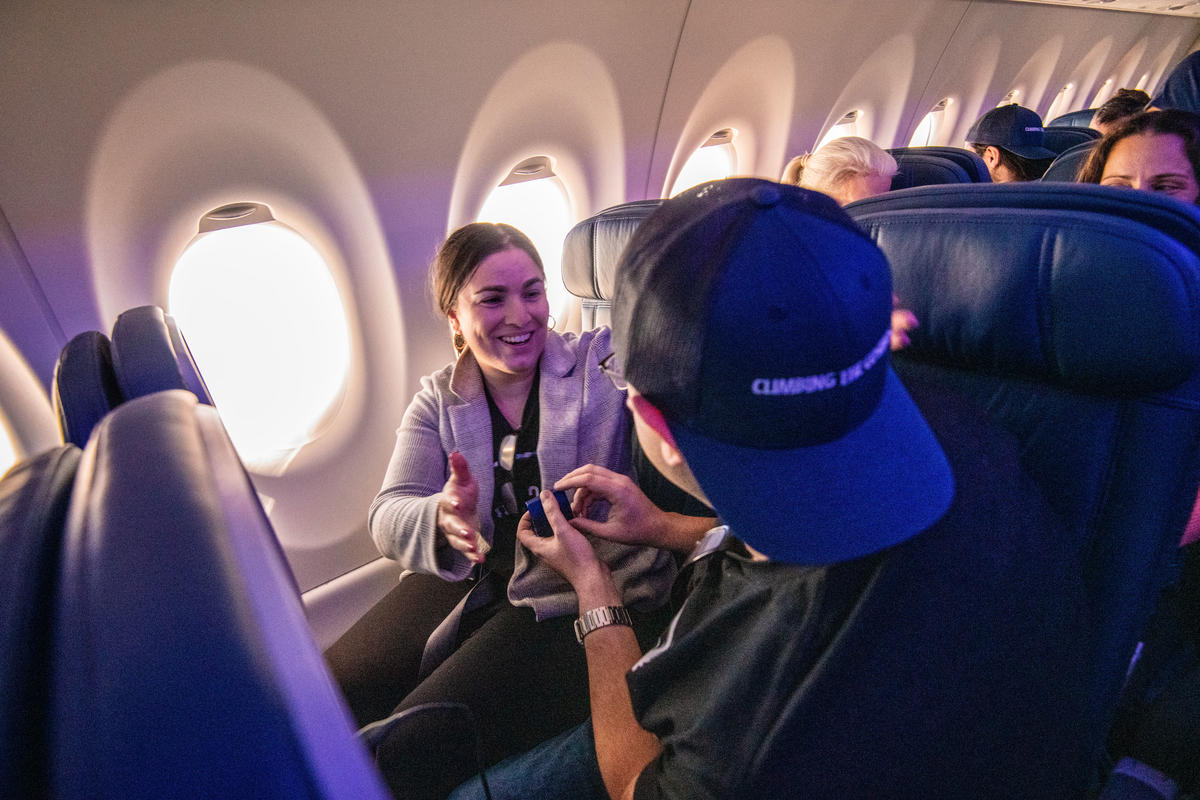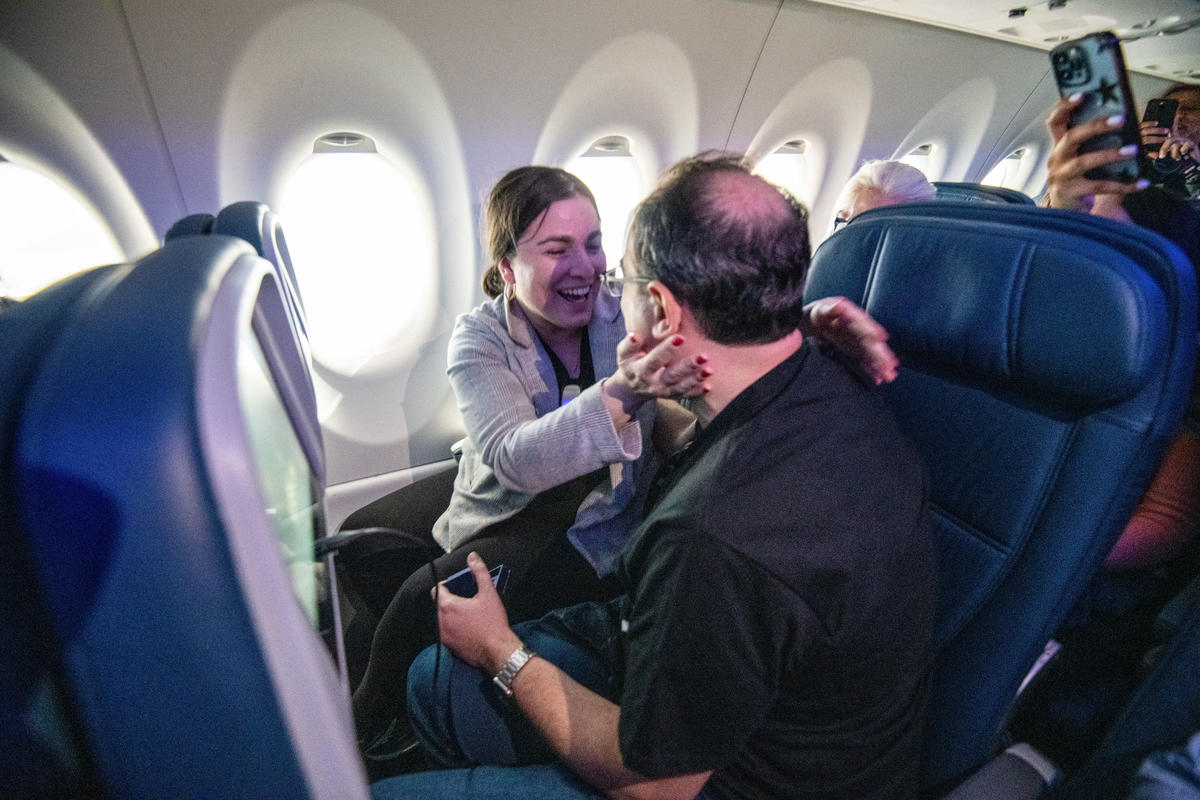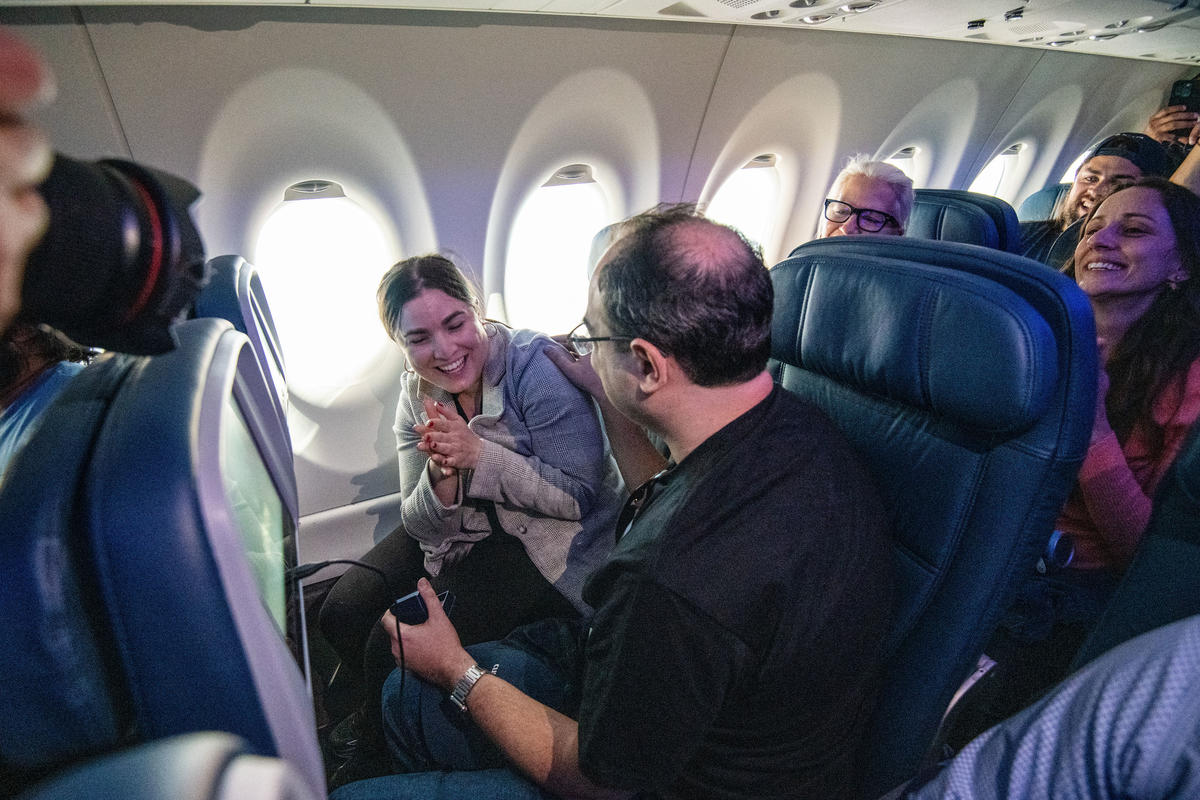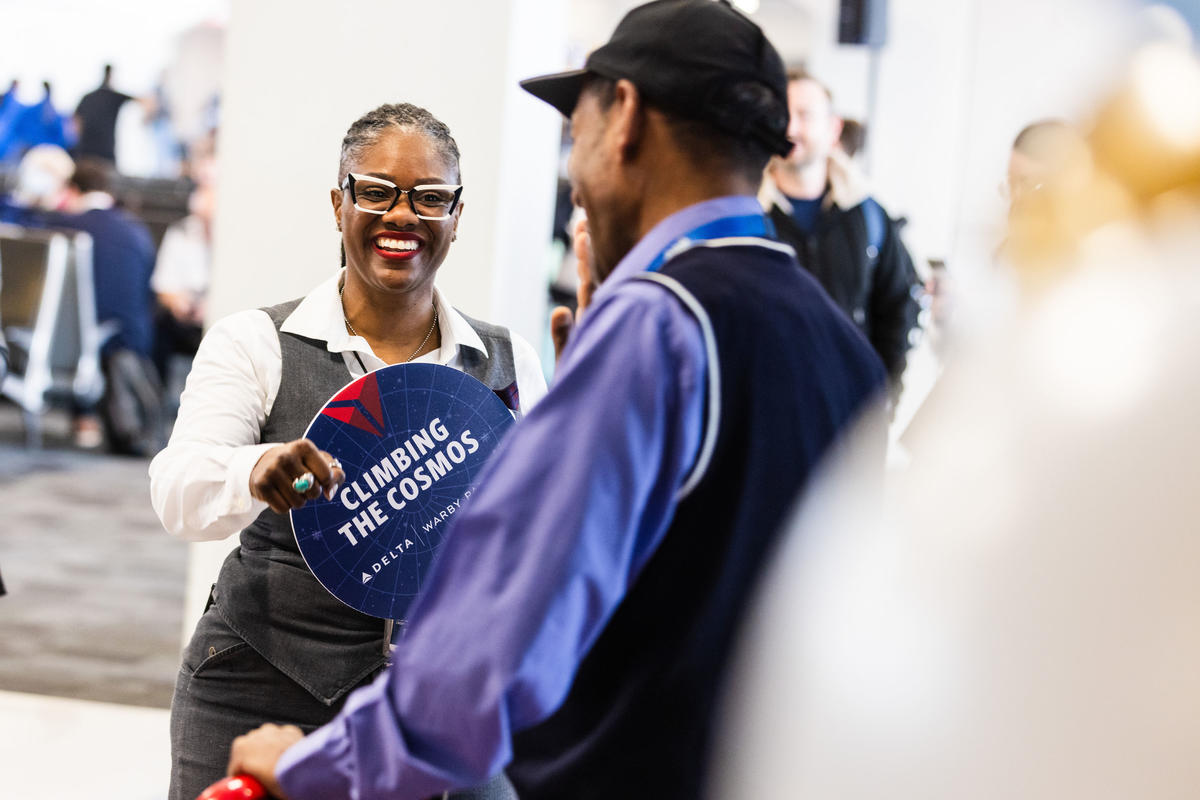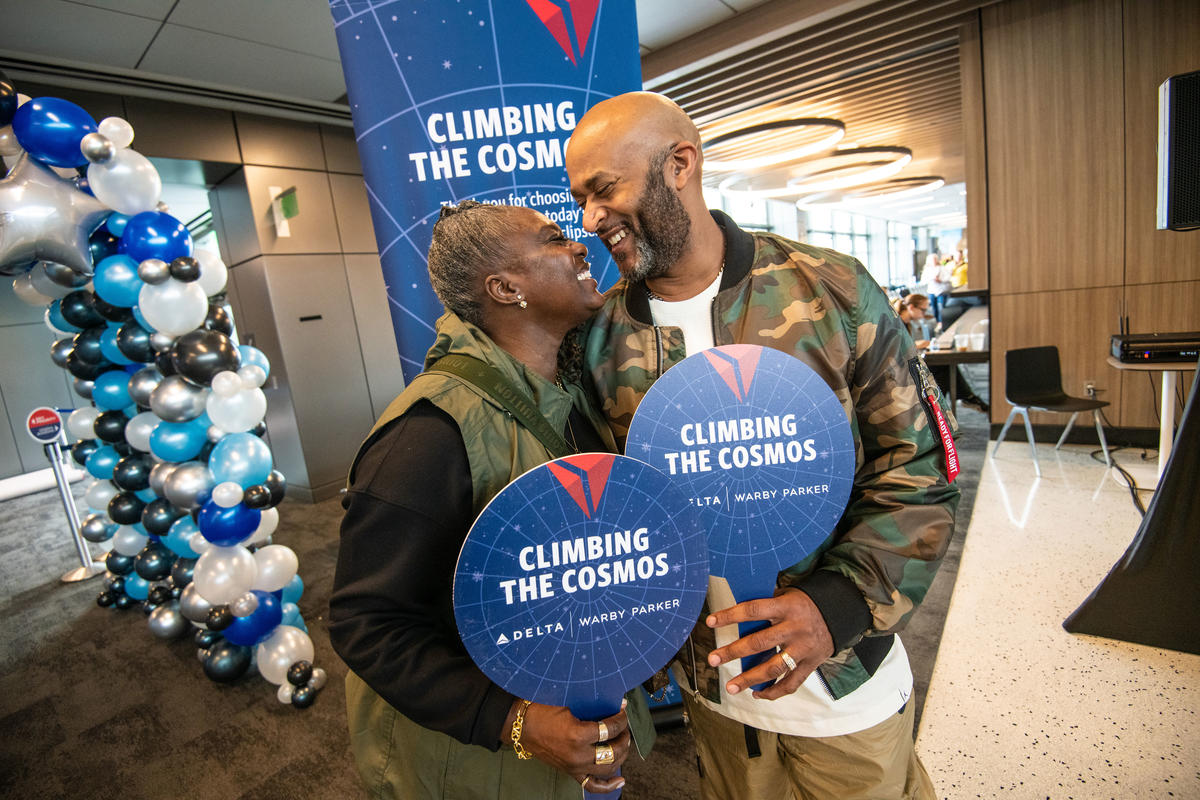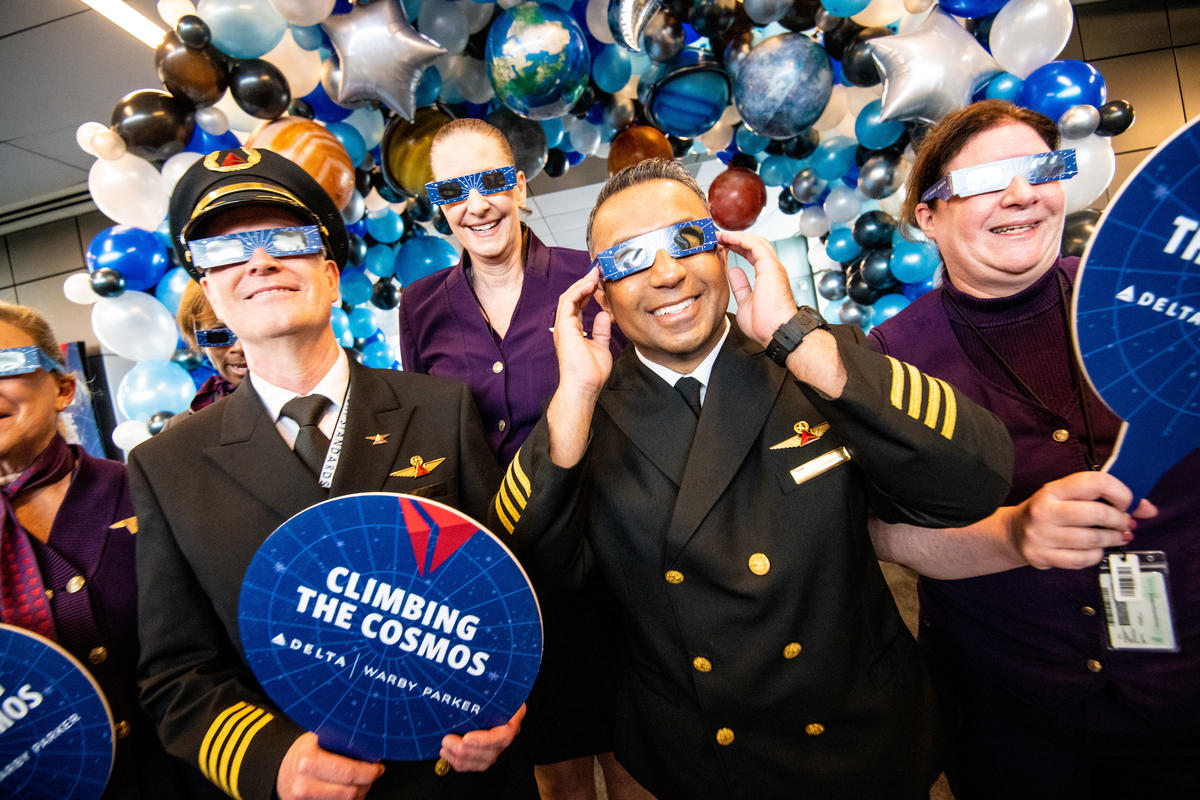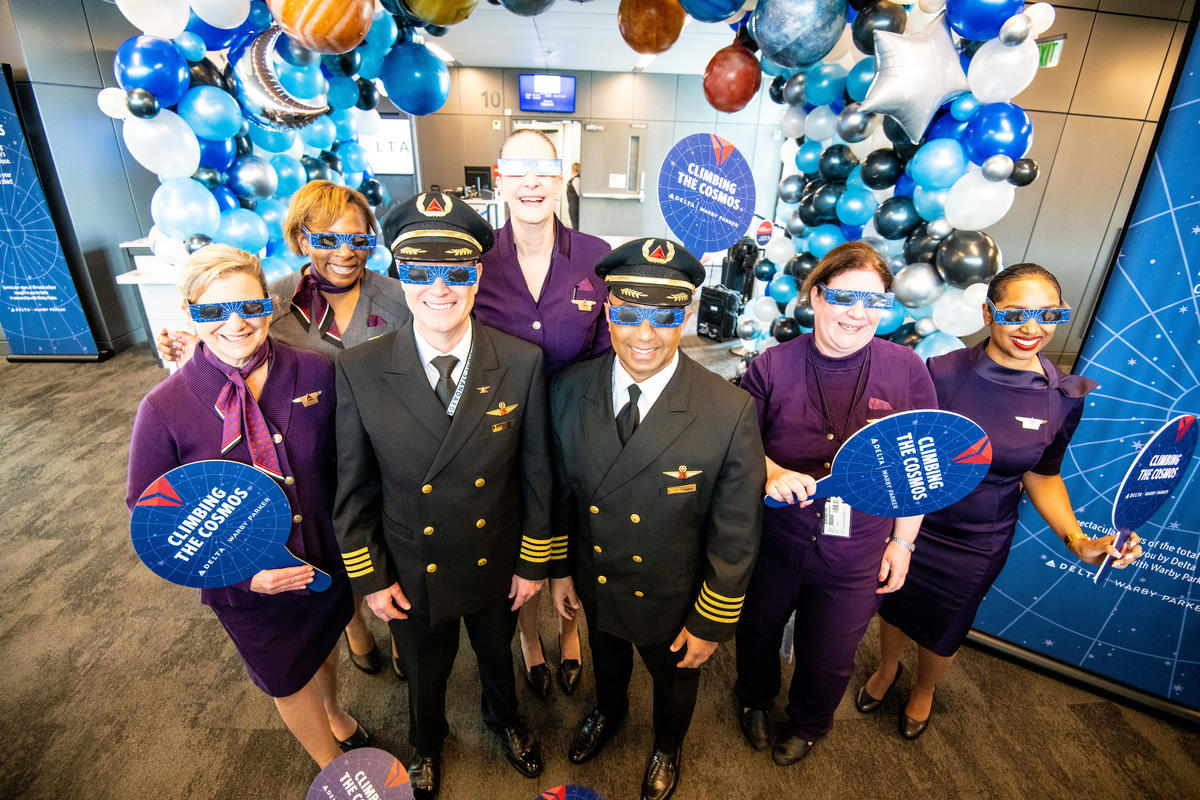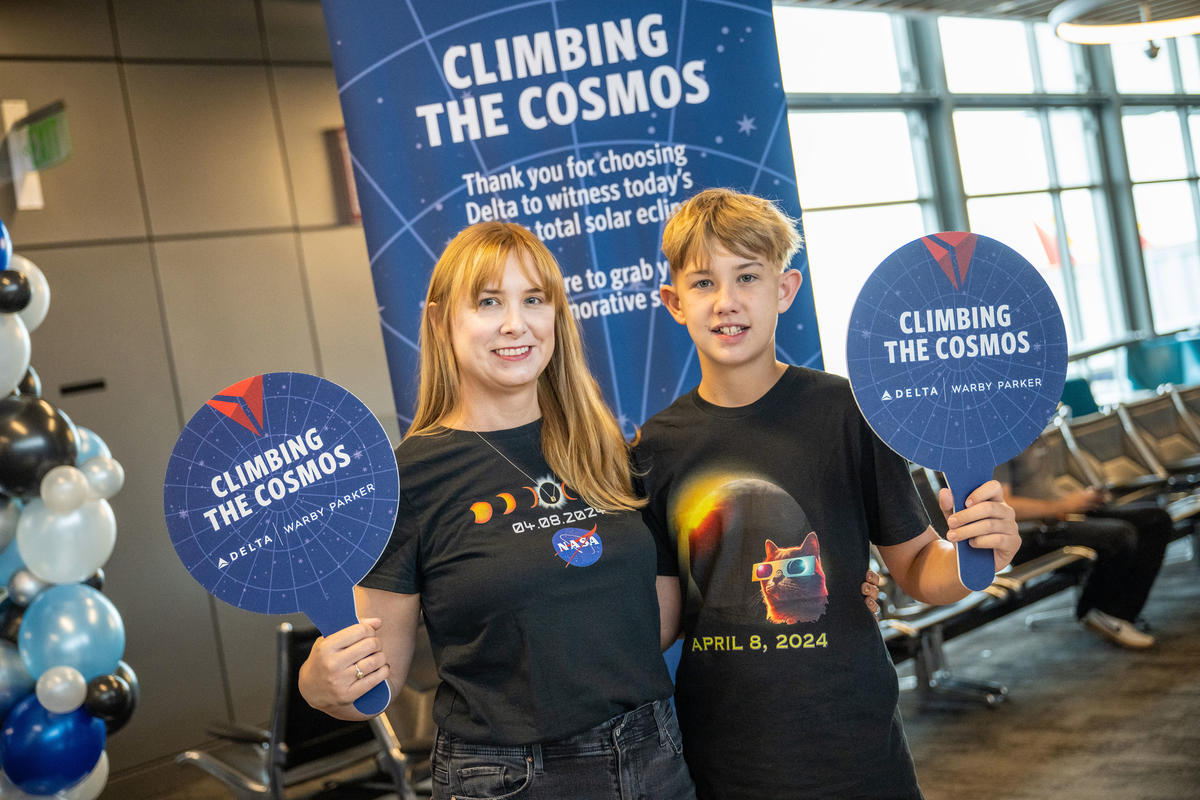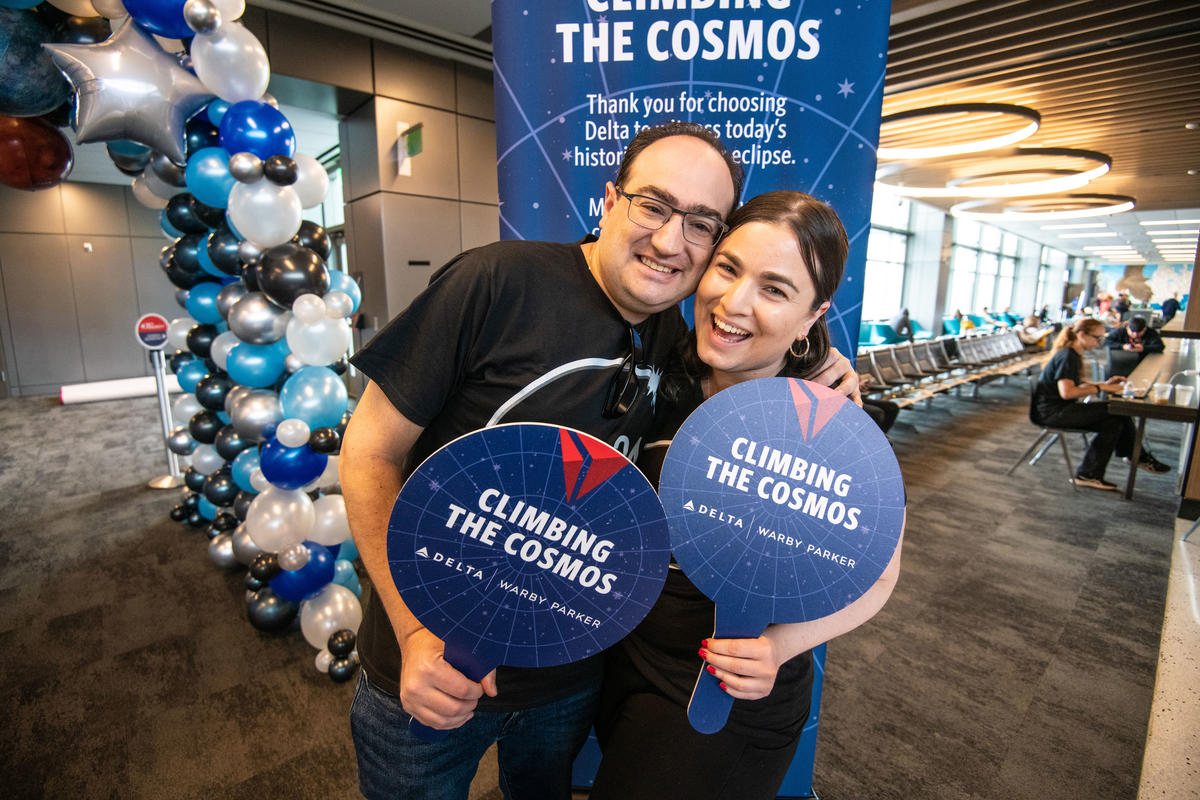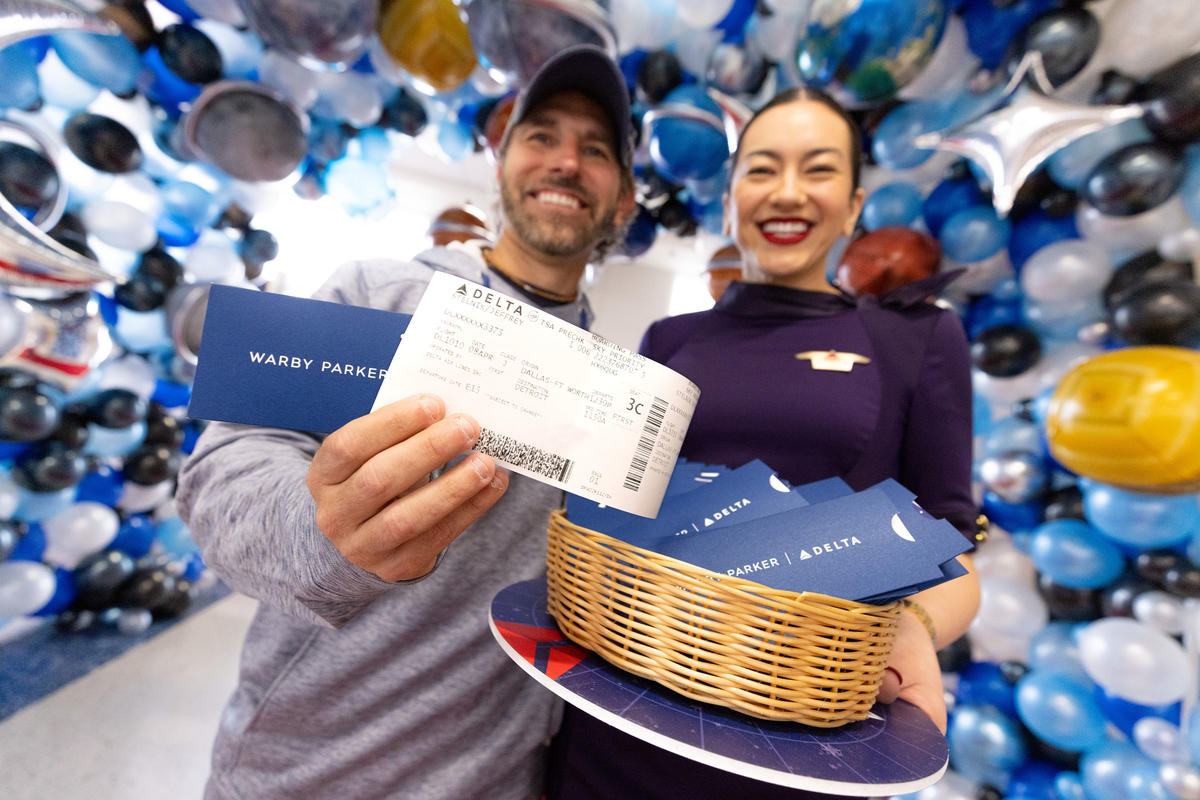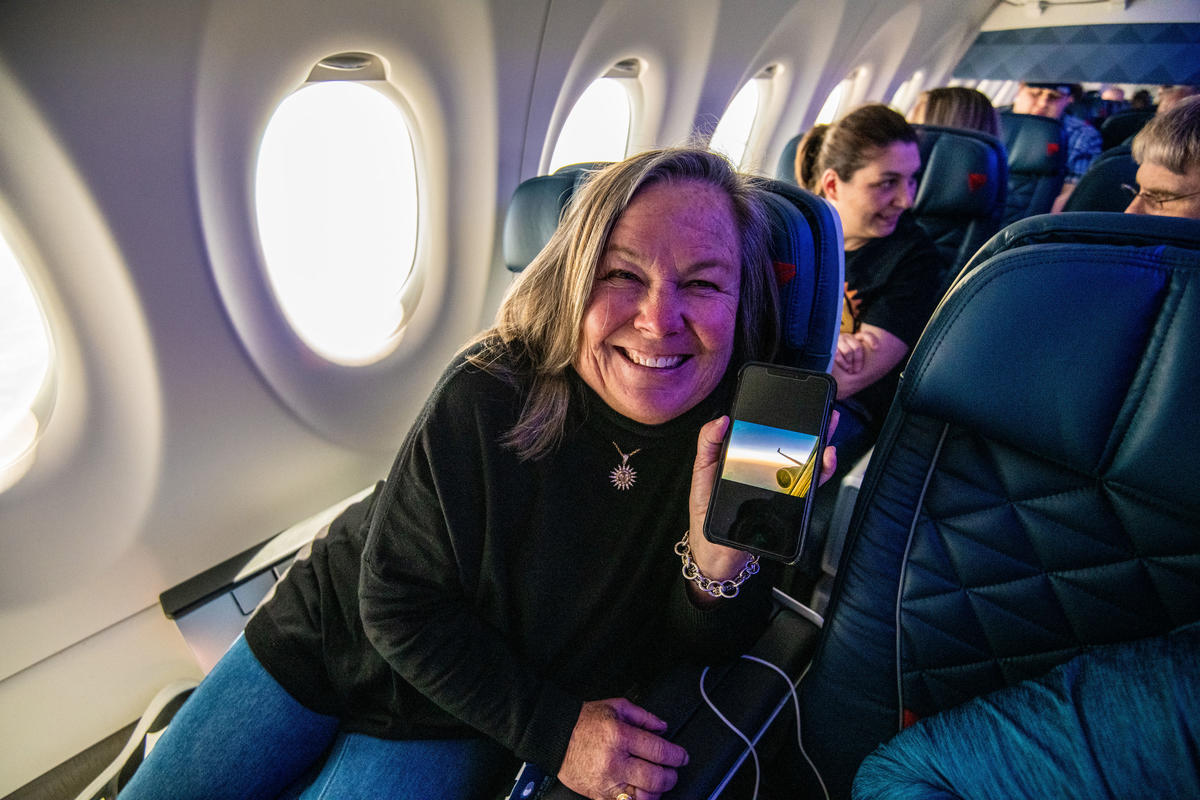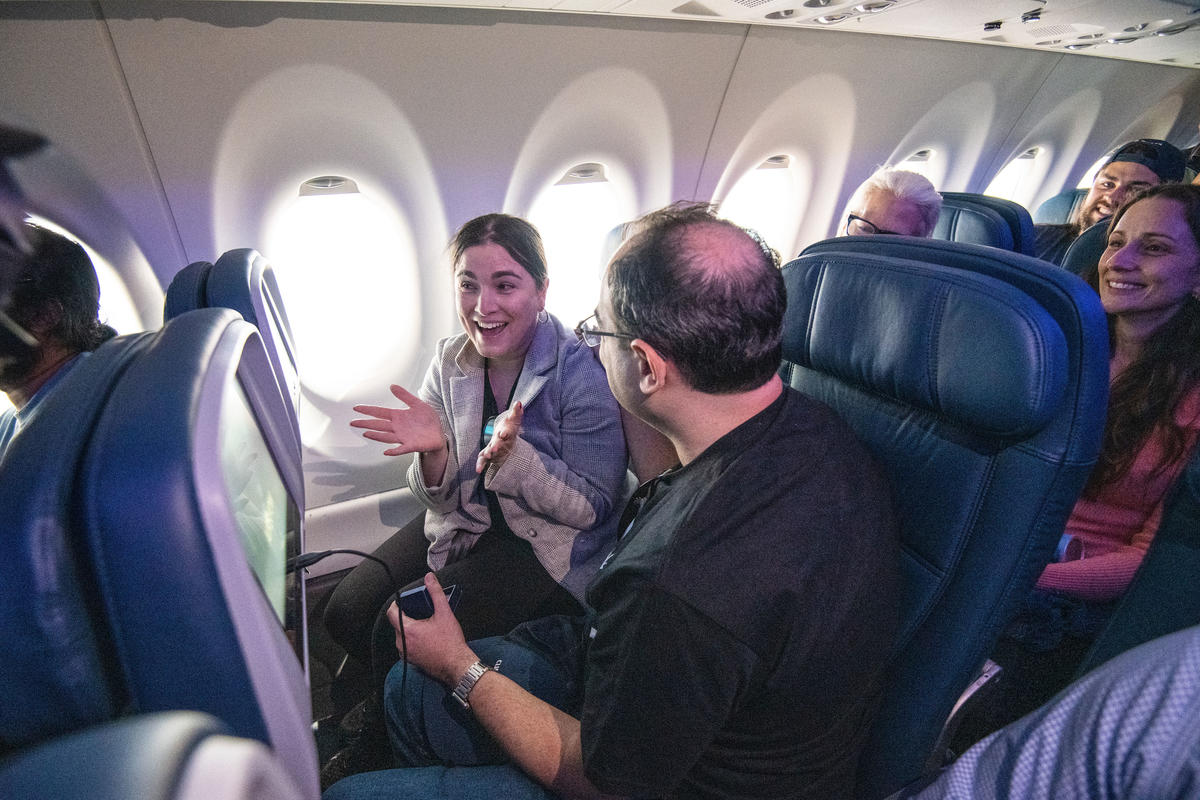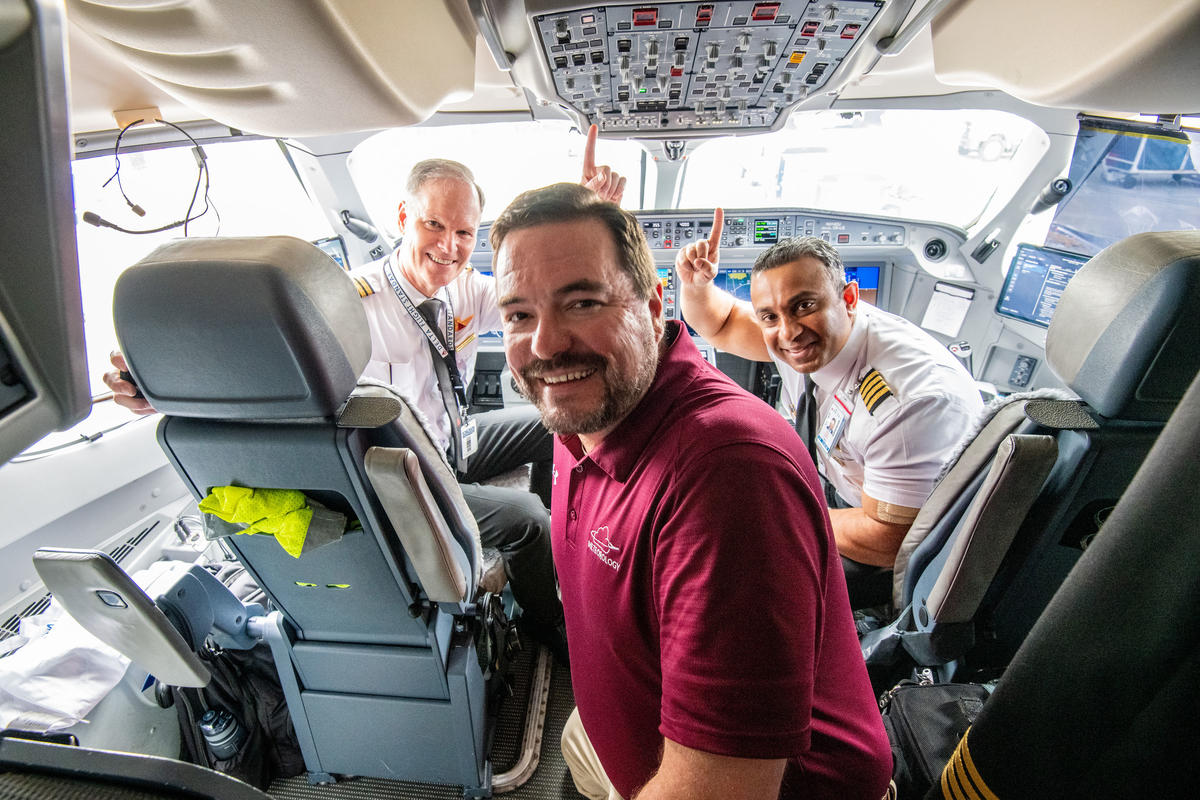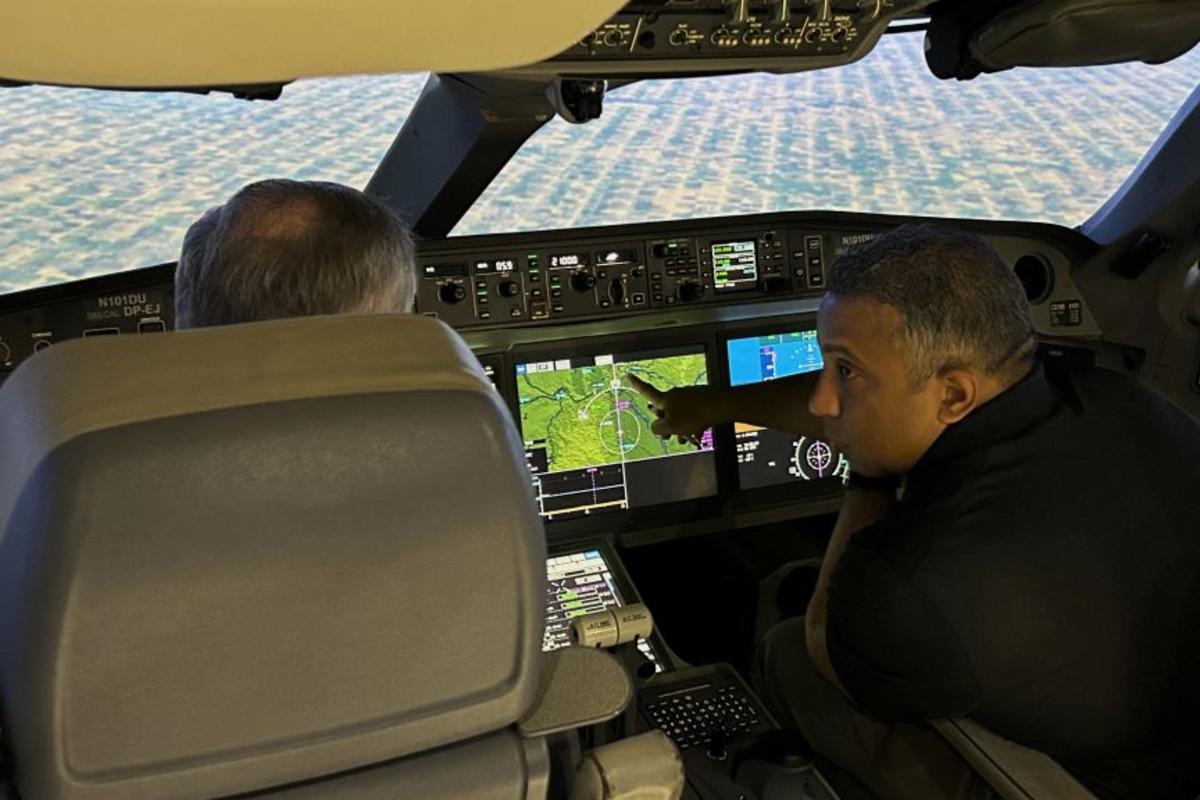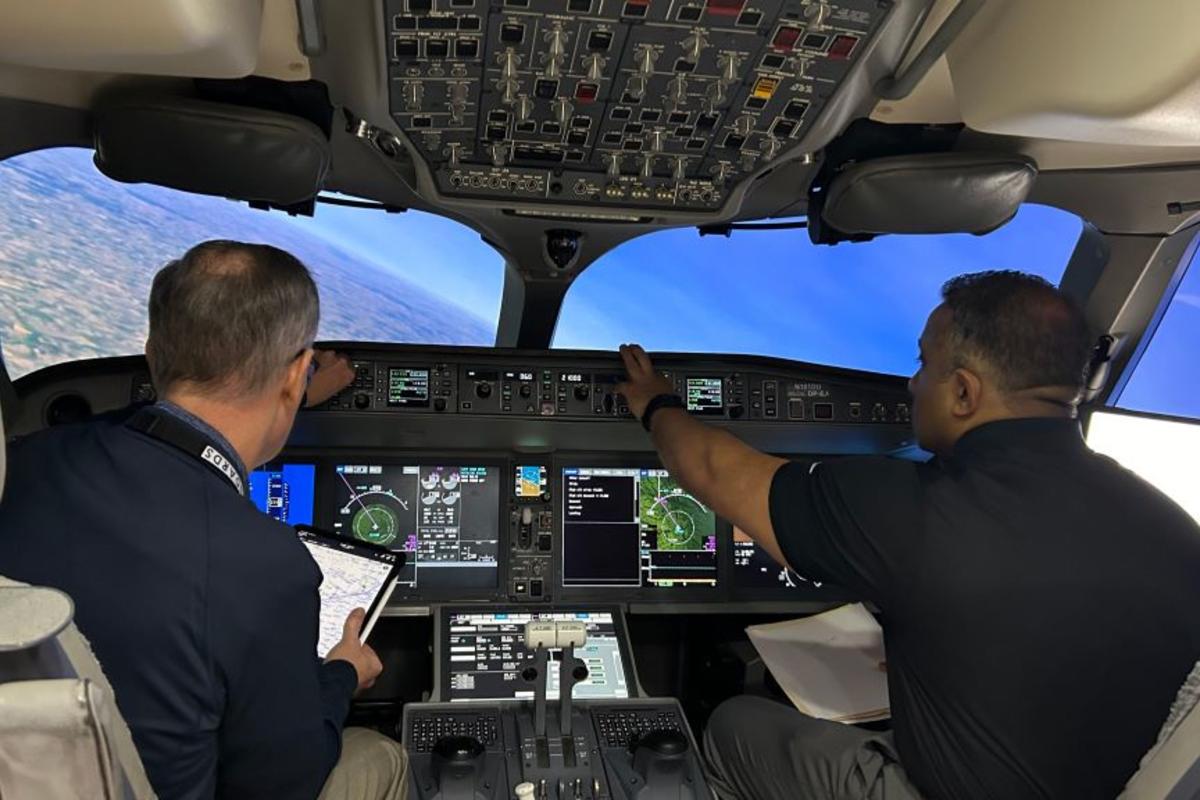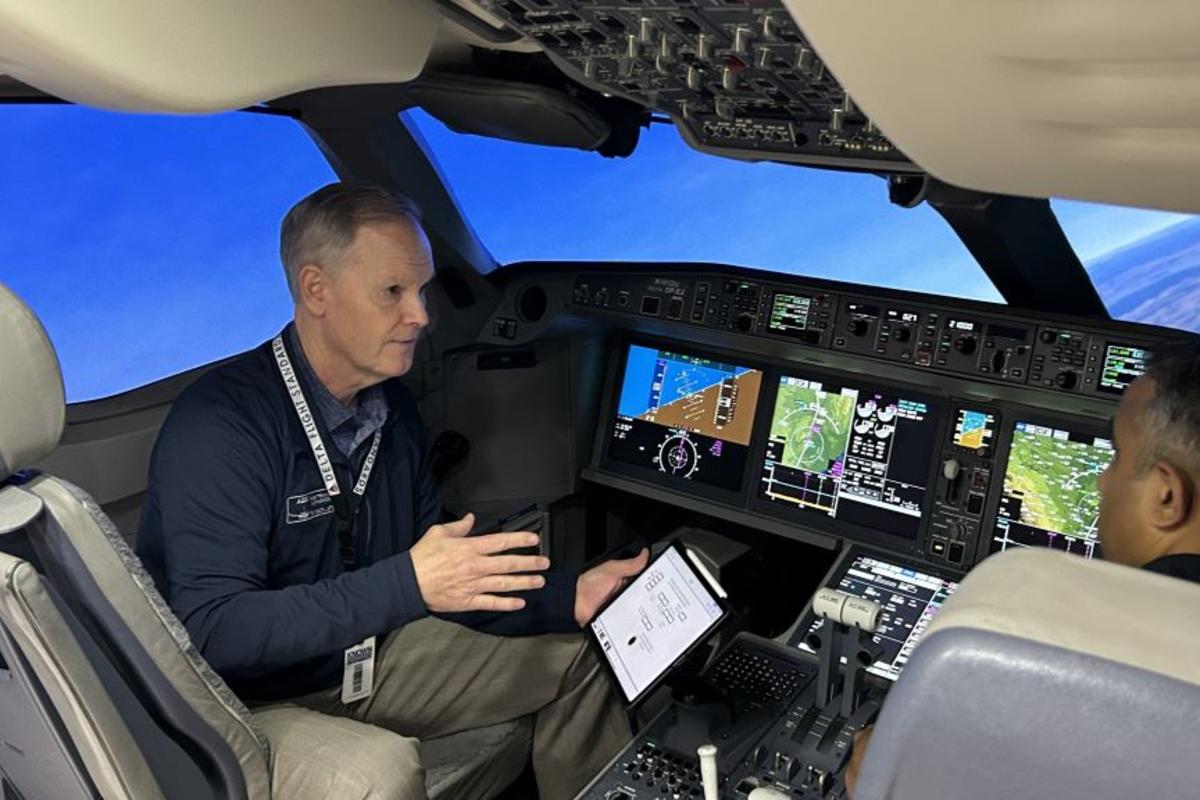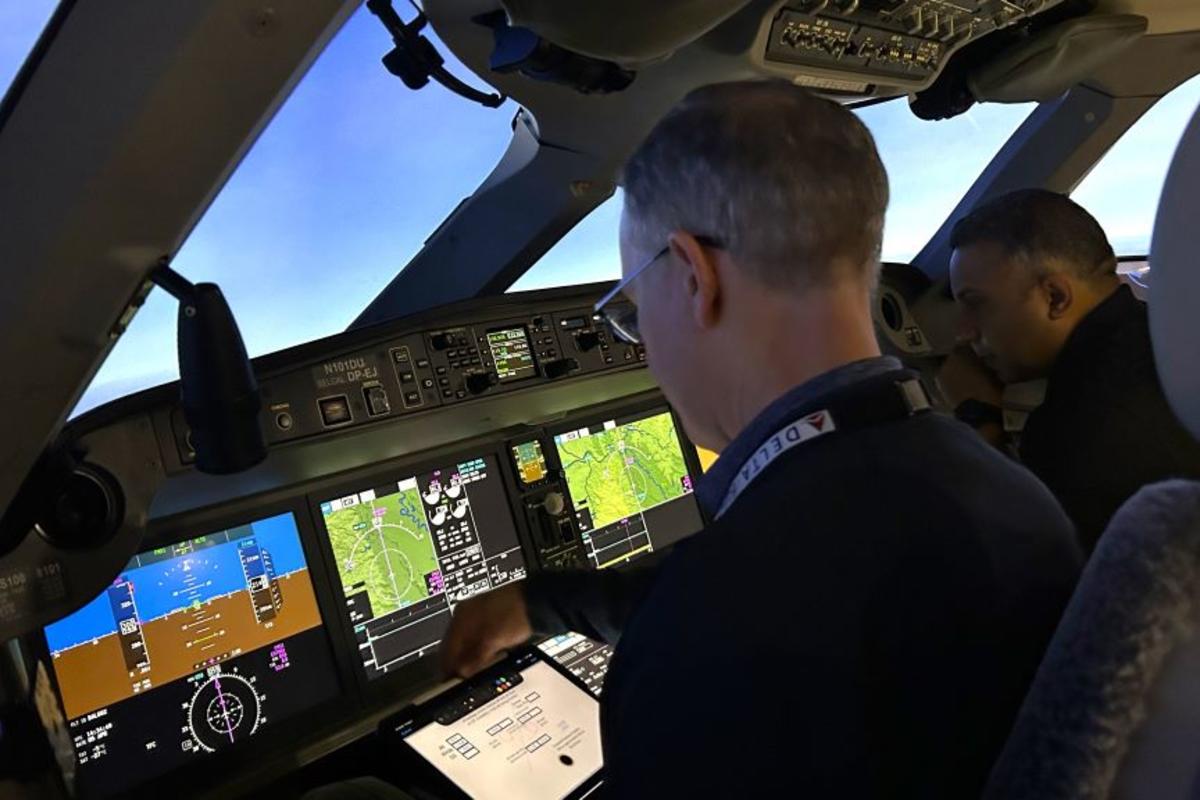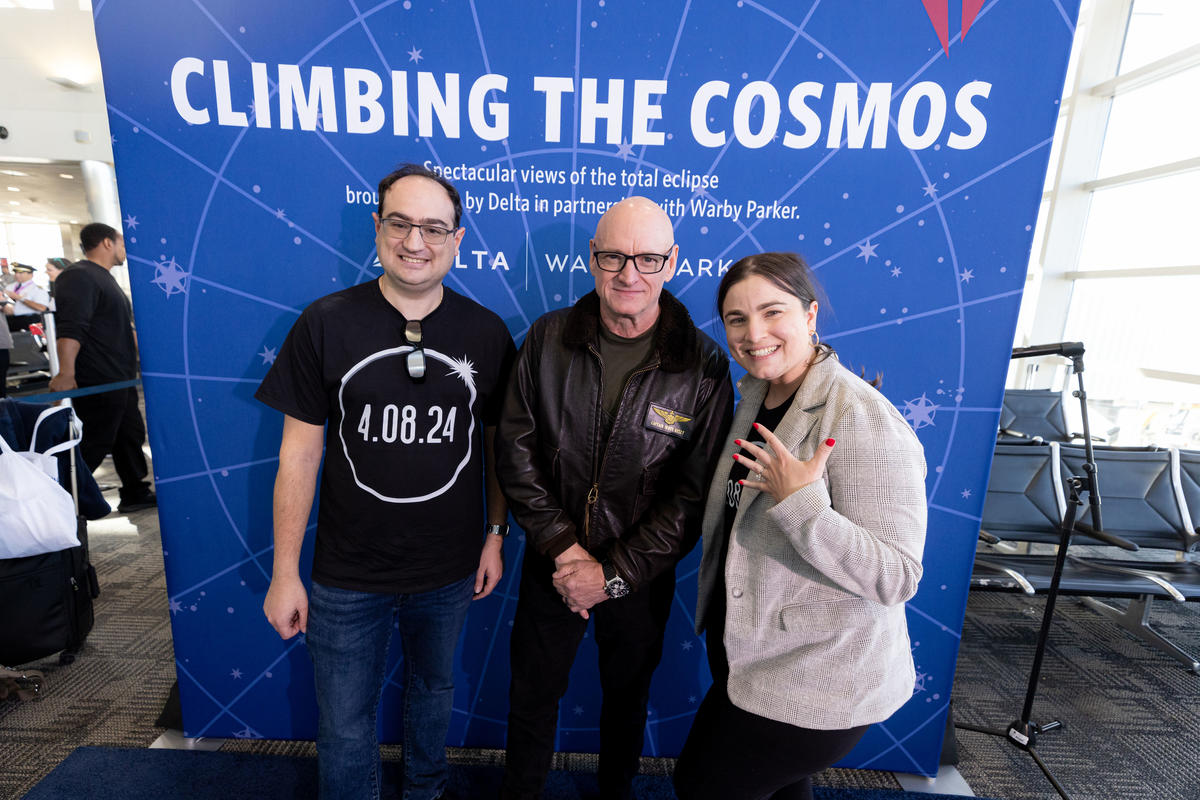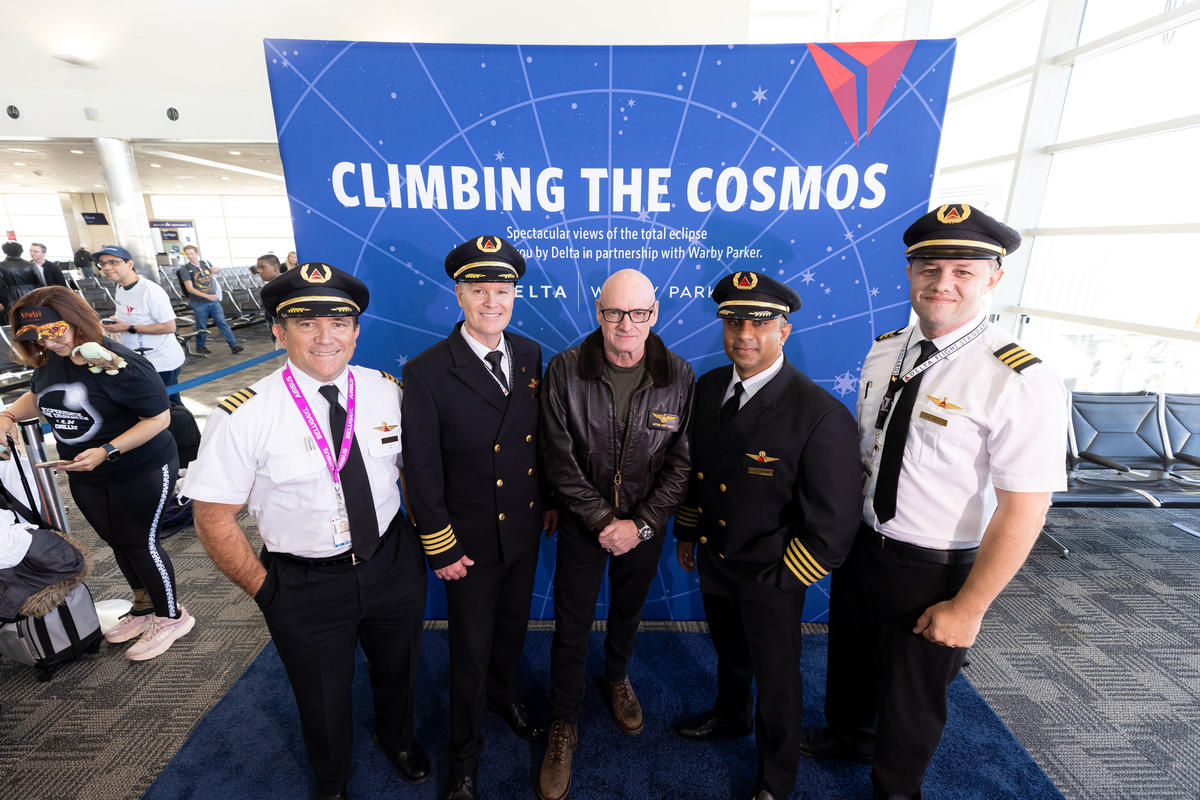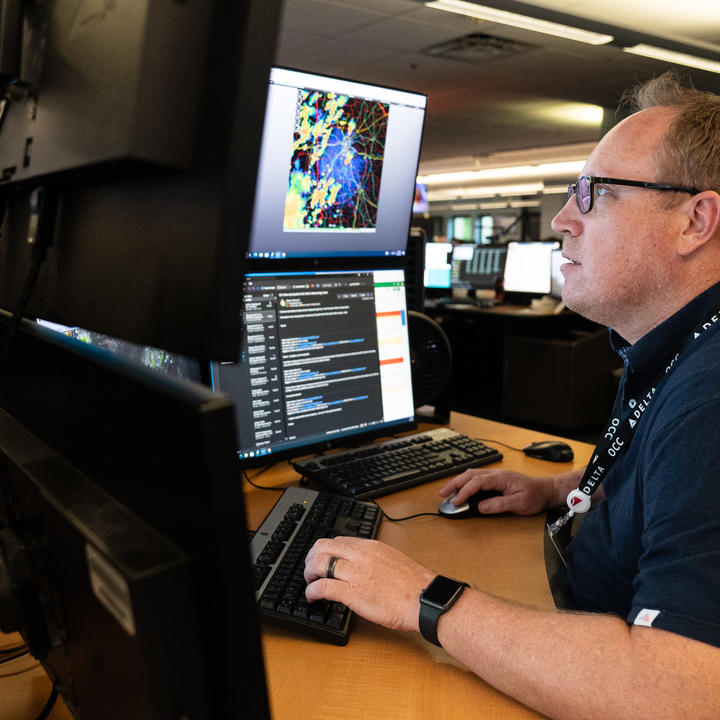1 solar eclipse, 2 spectacular flights: How Delta people are preparing for the celestial event
With all eyes to the sky during the year’s total solar eclipse, Delta people detail their meticulous preparation and devoted involvement ahead of the airline’s first-ever flights across the path of totality.

COMPLETE COVERAGE | 2024 solar eclipse
This year, Delta is doing something it has never done before in its almost 100-year history: fly along the path of totality during a total solar eclipse. Delta pilots are well-trained and well-prepared for any flight, but this special eclipse mission has meant extra hours in the simulator and time spent considering the flight’s plan. And Delta isn’t just doing it once. It’s doing it twice. At the same time.
Two Delta flights bound for Detroit Metropolitan Wayne County Airport (DTW) Monday will offer optimal views of the total solar eclipse Monday: DL 1218 from Austin-Bergstrom International Airport (AUS) and DL 1010 from Dallas Fort Worth International Airport (DFW).
Both Capt. Phillip Marshall and Lead Line Check Pilot Capt. Phil Daniels were elated when they received the news that they would be flying the DL 1218 AUS-DTW route.
“It was definitely exciting to be selected to do something we don’t ever get to do,” Daniels said. “I’m looking forward to giving customers memories to hold on to and to fly with my boss.”
“I was very excited about the opportunity to do something like this and for our A220 fleet to be highlighted,” Marshall said. “I’m always willing to do what it takes to get the job done, and I always love flying with Phil.”
In addition to the camaraderie in the flight deck, safety remains the number one priority across Delta’s workgroups in preparation for each and every flight. “Whenever we do anything even the slightest bit different from our normal flight routine, we run it through our channels and have as many people look at it as possible to get different perspectives involved,” Marshall said.
Many individuals, including flight superintendent Chris Clisham on the flight dispatch team, ensure the alignment of experts across meteorology, flight planning, strategic planning and operations management.
Clisham oversees air traffic movement, fuel planning, general operations and emergency planning for 30-40 flights on a given day, acting as the eyes and ears for the crew. For April 8, his team assigned a flight superintendent for DL 1218 and DL 1010 exclusively.
“We always aim for punctuality with departures and arrivals, but this flight adds an element of hitting an airspace at a specific time,” Clisham said. “Most people don't realize how intricate and how precise lining up with the sun’s shadow really is.”
This year’s eclipse will travel across the U.S. at 1,600 miles per hour, while the aircraft will be moving at about 480 miles per hour. The path of totality and the flights’ paths will come together about halfway the planned flight time.
Although the flights will not fly over Memphis, Tennessee, their airspace sector (Memphis Air Traffic Control) will be where many customers will view the eclipse. Clisham noted the potential delays because of the normal heavy congestion within this path. “That's where the predominance of our attention has been,” he said.
While Delta people on the ground have been meticulously planning to put two planes in the right place at the right time for the perfect above-the-clouds view, pilots have been perfecting the timing of an “S-turn” maneuver during flight simulation, allowing customers optimal viewing on both sides of the aircraft during the four-minute totality duration.
“We’ve been in constant communication with Memphis Center, and we'd like to complete the turns before we leave their sector,” Clisham said.
Getting all of this timing just right means coordination on the flight deck, with Delta’s teams on the ground and coordination with Memphis Air Traffic Control.
Both pilots are appreciative of the work Clisham and his team have done to prepare for the flights.
“None of us can predict every scenario that we may be faced with,” Marshall said. “I can’t tell you how important that coordination and teamwork is to see as a pilot, because I’m on the end of that long chain. It’s amazing to see it come together.”
“We have been researching and taking the eclipse speed into consideration,” Daniels said. “We’ve tried different altitudes and wind settings to work out the timing of the turns we want to do.”
Both pilots will be drawing upon their nearly 90 combined years of flying experience in the Air Force and at Delta. The two aviators are also involved in Delta’s Flight Standards program, a pathway assisting newly trained pilots to implement the airline’s strict safety guidelines. Marshall serves as the captain of this program.
The unique nature of the flight allows a spotlight to shine on inspiring the next generation of aviation professionals.
“I really hope there are lots of children on this flight so they can see the science happening right outside their windows,” Daniels said. “This is a great opportunity to inspire a whole new generation of aviators.”
All eyes are on the clock eagerly waiting for the big day, eager to see the moon cross in front of the sun.
“I feel like every time we defy gravity and go airborne it’s pretty spectacular,” Marshall said. “Now, it’s going to be even more exciting to share the experience of this solar eclipse flight with everyone on board our two Delta flights.”
© 2025 Delta Air Lines, Inc.
